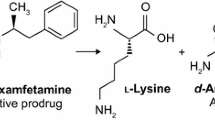Previous evidence demonstrated that drug-induced extracellular dopamine (DA) concentrations in the nucl. accumbens shell (AcbSh) might underlie different vulnerabilities to heroin addiction in inbred mice strains. We investigated a potential role of the responsiveness of the DA system in the AcbSh with respect to the vulnerability to heroin-influenced conditioned place preference (CPP) in rats. Animals were randomly assigned to the heroin and saline (control) groups. Heroin-group rats were then reclassified into two groups according to the degree of heroin-induced CPP, high preference (HP) and low-preference (LP) ones. The levels of extracellular DA and dihydroxyphenyl acetic acid (DOPAC) were estimated dynamically by in vivo microdialysis. Compared with the saline group, extracellular DA and DOPAC concentrations in the heroin-treated groups were significantly higher 30 min after the last injection, but the DA level decreased sharply in these groups on days 1 and 3 and became lower than that of the saline group. Compared with LP-group rats, HP-rats displayed a higher heroin-induced increase in the DA concentration 30 min after the last heroin injection and higher DOPAC and DOPAC/DA ratios 14 days after such injection. These results suggest that differences in the DA system responsiveness in the AcbSh may determine individual differences in vulnerability to heroin addiction.
Similar content being viewed by others
References
G. F. Koob, P. P. Sanna, and F. E. Bloom, “Neuroscience of drug addiction,” Neuron, 21, No. 3, 467-476 (1998).
H. W. Matthes, R. Maldonado, F. Simonin, et al., “Loss of morphine-induced analgesia, reward effect and withdrawal symptoms in mice lacking the mu-opioidreceptor gene,” Nature, 383, No. 6603, 819-823 (1996).
B. J. Everitt and M. E. Wolf, “Psychomotor stimulant addiction: A neural systems perspective,” J. Neurosci., 22, No. 9, 3312-3320 (2002).
S. Ikemoto, “Dopamine reward circuitry: Two projection systems from the ventral midbrain to the nucleus accumbens-olfactory tubercle complex,” Brain Res. Rev., 56, No. 1, 27-78 (2007).
W. A. Carlezon Jr., D. P. Devine, and R. A. Wise, “Habitforming actions of nomifensine in nucleus accumbens,” Psychopharmacology, 122, No. 2, 194-197 (1995).
S. Ikemoto and B. M. Witkin, “Locomotor inhibition induced by procaine injections into the nucleus accumbens core, but not the medial ventral striatum: implication for cocaine-induced locomotion,” Synapse, 47, No. 2, 117-122 (2003).
S. Ikemoto, B. S. Glazier, J. M. Murphy, and W. J. McBride, “Role of D1 and D2 receptors in the nucleus accumbens in mediating reward,” J. Neurosci., 17, No. 21, 8580-8587 (1997).
L. H. Sellings and P. B. Clarke, “Segregation of amphetamine reward and locomotor stimulation between nucleus accumbens medial shell and core,” J. Neurosci., 23, No. 15, 6295-6303 (2003).
N. D. Volkow, J. S. Fowler, G. J. Wang, et al., “Decreased dopamine D2 receptor availability is associated with reduced frontal metabolism in cocaine abusers,” Synapse, 14, No. 2, 169-177 (1993).
L. R. Lucas, J. A. Angulo, M. LeMoal, et al., “Neurochemical characterization of individual vulnerability to addictive drugs in rats,” Eur. J. Neurosci., 10, No. 10, 3153-3163 (1998).
P. V. Piazza and M. LeMoal, “Pathophysiological basis of vulnerability to drug abuse: role of an interaction between stress, glucocorticoids, and dopaminergic neurons,” Annu. Rev. Pharmacol. Toxicol., 36, 359-378 (1996).
O. Giorgi, G. Piras, D. Lecca, and M. G. Corda, “Differential activation of dopamine release in the nucleus accumbens core and shell after acute or repeated amphetamine injections: a comparative study in the Roman high- and low-avoidance rat lines,” Neuroscience, 135, No. 3, 987-998 (2005).
R. Chen, M. Zhang, S. Park, and M. E. Gnegy, “C57BL/6J mice show greater amphetamine-induced locomotor activation and dopamine efflux in the striatum than 129S2/SvHsd mice,” Pharmacol. Biochem. Behav., 87, No. 1, 158-163 (2007).
K. A. Badanich, K. J. Adler, and C. L. Kirstein, “Adolescents differ from adults in cocaine conditioned place preference and cocaine-induced dopamine in the nucleus accumbens septi,” Eur. J. Pharmacol., 550, Nos. 1/3, 95-106 (2006).
P. Tuomainen, A. Patsenka, P. Hyytiä, et al., “Extracellular levels of dopamine in the nucleus accumbens in AA and ANA rats after reverse microdialysis of ethanol into the nucleus accumbens or ventral tegmental area,” Alcohol, 29, No. 2, 117-124 (2003).
M. C. van der Elst, E. W. Roubos, B. A. Ellenbroek, et al., “Apomorphine-susceptible rats and apomorphineunsusceptible rats differ in the tyrosine hydroxylaseimmunoreactive network in the nucleus accumbens core and shell,” Exp. Brain Res., 160, No. 4, 418-423 (2005).
K. A. Badanich, A. M. Maldonado, and C. L. Kirstein, “Chronic ethanol exposure during adolescence increases basal dopamine in the nucleus accumbens septi during adulthood,” Alcohol Clin. Exp. Res., 31, No. 5, 895-900 (2007).
R. Camarini, W. C. 3rd Griffin, A. B. Yanke, et al., “Effects of adolescent exposure to cocaine on locomotor activity and extracellular dopamine and glutamate levels in nucleus accumbens of DBA/2J mice,” Brain Res., 1193, 34-42 (2008).
L. N. Schramm-Sapyta, “Drug Addiction: What can animal models teach us?” Preclinica, 2, No. 6, 416-421 (2004).
C. L. Cunningham, S. D. Dickinson, N. J. Grahame, et al., “Genetic differences in cocaine-induced conditioned place preference in mice depend on conditioning trial duration,” Psychopharmacology, 146, No. 1, 73-80 (1999).
C. Wang, H. Chen, and W. Hao, “Relations between novel environmental response and heroin-dependent susceptibility in Sprague-Dawley rats,” Zhong Nan Da Xue Xue Bao Yi Xue Ban, 34, No. 4, 277-281 (2009).
Y. X. Gong, M. Lu, Y. P. Zhu, et al., “Endogenous histamine inhibits the development of morphine-induced conditioned place preference,” Acta Pharmacol. Sin., 28, No. 1, 10-18 (2007).
A. Erhardt, I. Sillaber, T. Welt, et al., “Repetitive transcranial magnetic stimulation increases the release of dopamine in the nucleus accumbens shell of morphine-sensitized rats during abstinence,” Neuropsychopharmacology, 29, No. 11, 2074-2080 (2004).
Author information
Authors and Affiliations
Corresponding author
Rights and permissions
About this article
Cite this article
Wang, C., Chen, H., Wang, X. et al. Dopamine Responsiveness in the Nucl. Accumbens Shell and Parameters of the Heroin-Influenced Conditioned Place Preference in Rats. Neurophysiology 47, 212–217 (2015). https://doi.org/10.1007/s11062-015-9523-0
Received:
Published:
Issue Date:
DOI: https://doi.org/10.1007/s11062-015-9523-0




